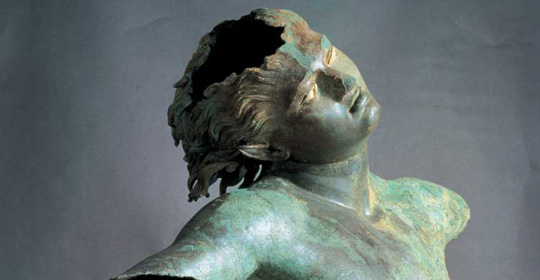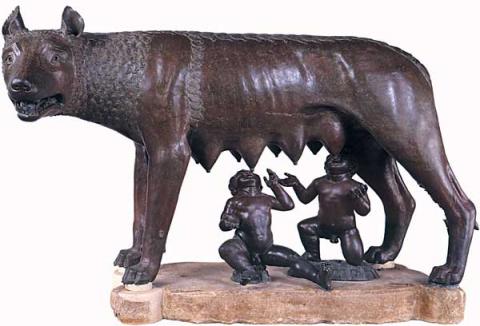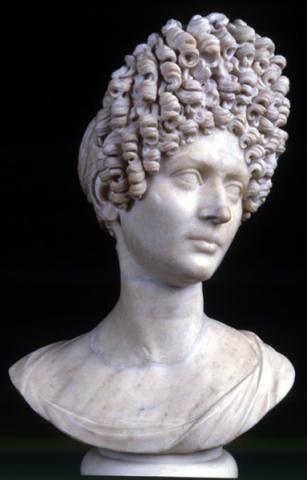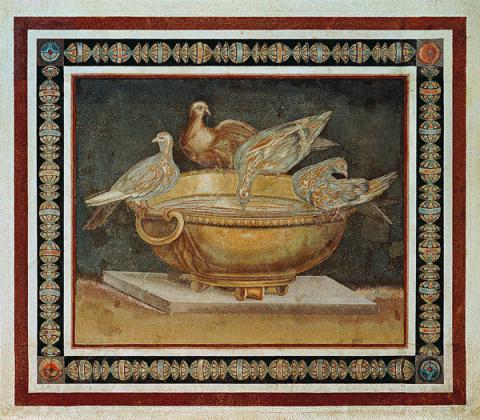The Dancing Satyr at the Capitoline Museums

The second chance in Rome (after Palazzo Montecitorio) to see the bronze satyr exhibited. The satyr was found in the sea near Mazara del Vallo in Sicily between 1997 and 1998, and was restored by the Istituto Centrale per il Restauro.
The exhibition of the Dancing Satyr at the Capitoline Museums in the Hall of the Horatii and Curiatii, alongside other notable examples of ancient bronze statuary follows directly on from the exhibition organised after the restoration in Palazzo Montecitorio, before it returns to its definitive home in Mazara del Vallo.
The Satyr was retrieved from the sea off the coast of Sicily in two different occasions: the discovery of the left leg, caught up in the nets of a fishing boat from Mazara in 1997, was followed by the discovery of the body in March 1998, however missing the other leg and the arms.
It had probably been part of the cargo of a shipwrecked vessel sailing between Sicily and Cape Bon between the 3rd and 2nd century BC. The remains of the ship were identified by a lateral scansion sonar analysis of the relative stretch of sea.
Like the wreck of the Madhia, found just off the North African coast, it is a record of the flourishing ancient trade in antiquities, aimed at satisfying the decorative tastes of wealthy homeowners in the Greek and Roman eras.
Complex diagnostic and conservation operations were carried out on the statue by the Istituto Centrale per il Restauro (Central Institute for Restoration) between 1998 and 2002.
The figure had larger than lifesize dimensions and was more than two metres tall. The overall weight of the preserved parts is around 108 kilograms (96 for the body, 12 the detached leg).
The young Satyr is caught in the act of dancing, with his arms outspread, possibly holding a cup and a thyrsus, the left leg slightly raised and the head turned to one side with hair flowing around.
His semi-feral nature is shown by his pointed ears and by the tail, which has now vanished but of which the connecting hole remains at the back of the statue.
The most significant comparisons can be seen in works from the High Hellenistic period, when the interest in a realistic analysis of both potential and actual movement became more important, as well as the representation of human activities far from the enforced decorum of classical age society.











































